The OODA loop model, otherwise known as “the decision cycle” was developed by US Air Force Colonel John Boyd as he sought to help pilots with their decision making process when in air combat.
Although this model won’t turn you into a fighter pilot, the core principles to better decision making are applicable to anyone. Like pilots, people from all backgrounds and cultures will find themselves in pressurised, emotionally dense, serious situations that require precise, meaningful decisions.
Success in business specifically requires you to be one step ahead of the competition while also being prepared to react to whatever is thrown your way. While it likely isn’t the do or die situation a fighter pilot might encounter, being a top performer requires strong decision making in all aspects of your life. If you find it difficult to maintain consistent decision patterns in your every day life – such as not listening to your gut, for example – starting at your place of work is perhaps the best place for you to grow. There, you can hone something an efficient business requires – good decision making skills. The more you assert yourself and trust your mind at work, the stronger you’ll feel within yourself. From there, a trickle effect can coat the finer streams of your life, as a consistently good decision maker is a top performer in any realm they practice.
That’s all well and good, but everyone needs to start somewhere. The OODA loop presents a simple, practical method for putting your best decision making cap on every day, no matter the circumstance.
What is the OODA loop?
As you can imagine, the OODA loop stands for something, despite its onomatopoeic outlook. It means to Observe, Orient, Decide, and Act. Let’s go through that in more detail.
Observe
At the starting point of the loop – remember, you’ll always be recycling through each step – you should be gathering as much new information from as many sources as practically possible. Just as a fighter pilot needs to be completely aware of their surroundings, such as the aircraft they’re flying and any potentially terrain or human threat, a top performer needs to place observation at the top of their priority list.
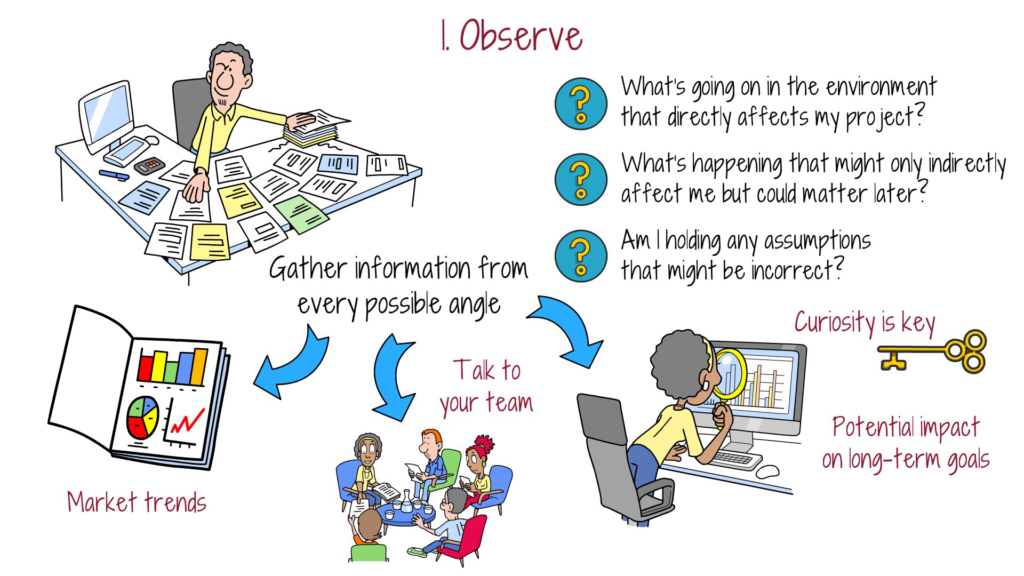
When you have as much information about what’s around you as possible, you can put yourself into a good place to make a decision. A solid place to start is asking yourself a series of questions, such as:
- What’s happening in the environment that directly affects me?
- What’s happening that indirectly affects me?
- What’s happening that may have an impact later on?
- Were my predictions accurate?
- Are there any areas where my predictions and reality differ significantly?
When you question yourself, you’re able to see what’s around you with more curiousity. With curiosity comes observation – it’s an eternal question that demands an answer no matter the circumstances.
Orient
Let’s say you are a fighter pilot. You’re in the air, observing. The radio cracks – there’s a storm headed your way. Now, what’s next?
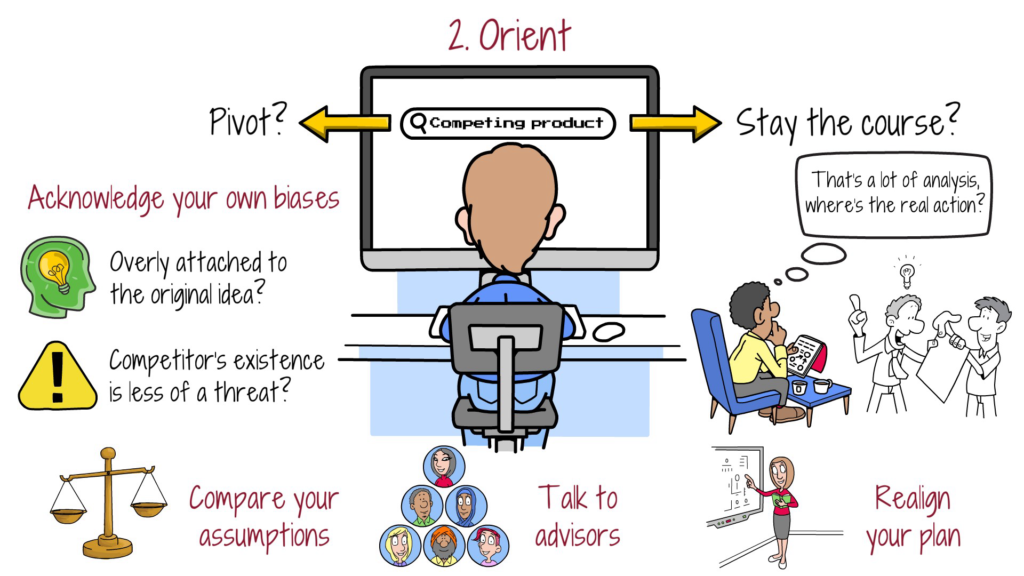
It’s time to orient yourself toward your new reality.
Essentially, when you receive new information, you analyse it. How does it affect your current reality? What will you need to do to adapt? These are the types of questions to ask yourself upon receiving new information.
Make no mistake, this is an important stage in the OODA loop. How you interpret your new circumstances directly impacts the decision you eventually make. It’s also perhaps the part of the OODA loop most people struggle with.
We struggle mostly because we are unreliable narrators of our own stories, no matter how much we’d like to believe otherwise. Everything, from buying morning coffee at Starbucks to deciding which jobs to apply for is filtered through our individual and highly unique experiences and perspectives. It’s why a new piece of information may struggle to stay authentic over the course of time. Such a factor must be considered when making a decision, because although you may perceive a situation a certain way, someone else may disagree altogether. When striving to be a top performer, decision-making must be from a complete, more diverse perspective.
It’s important to remember that orienting isn’t a one-off skill you master and then put to bed. To continually be a top decision maker, you will need to reorient yourself regularly, often quickly and without warning. It’s about how you respond to the new information you’ve observed.
Decide
The juicy part of the decision-making process. Deciding simply means to determine a course of action. At this point, you’ve observed new information and oriented yourself into a position where you take action.
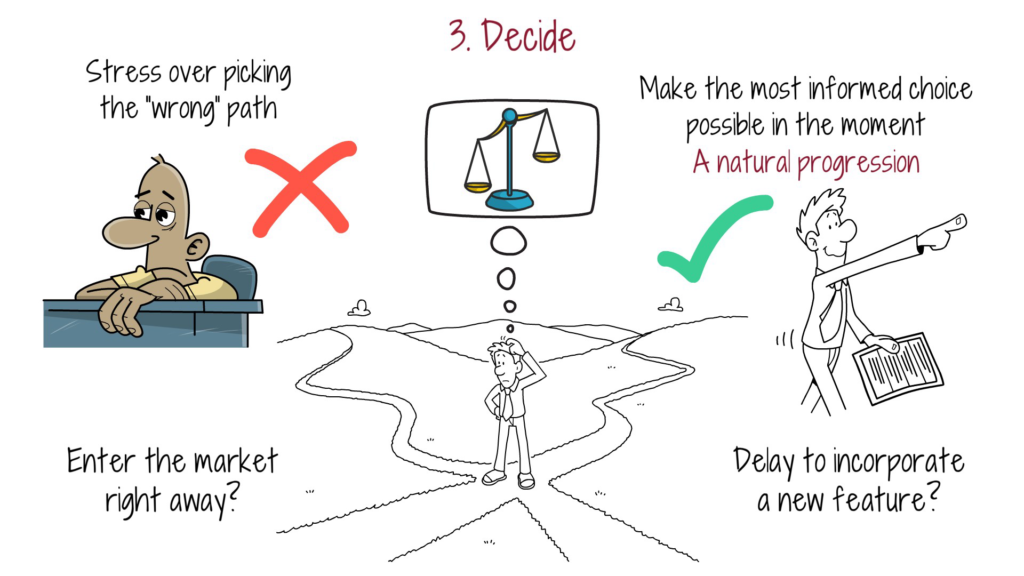
At their best, decisions are guesses, however educated. The more information you’ve observed and the orientation you’ve carried out, the better decision you’ll likely make, but it’s always a fluctuating process. Don’t expect every time you hit this stage of the OODA loop to be clear skies and rainbows. Even if you’ve gathered as much information as possible, your biased, sometimes unreliable perspective may prevent the best course of action from being taken. That’s not a bad thing, that’s just being human.
On a whole, the decision making process you carry out on a daily basis isn’t standardised into four steps. More often than not, it’s impossible to boil all factors down into such a process – humans make decisions based on instinct. A gut feeling. Learning when to listen to that will make this part of the process easier.
Act
You may think that the previous step – deciding – is the action part of the decision-making. It’s in the name, right? That may be true to some extent, but the last stage of the OODA loop – action – requires you to follow through on your decision. Making the decision is one thing, but it’s nothing if not implemented.
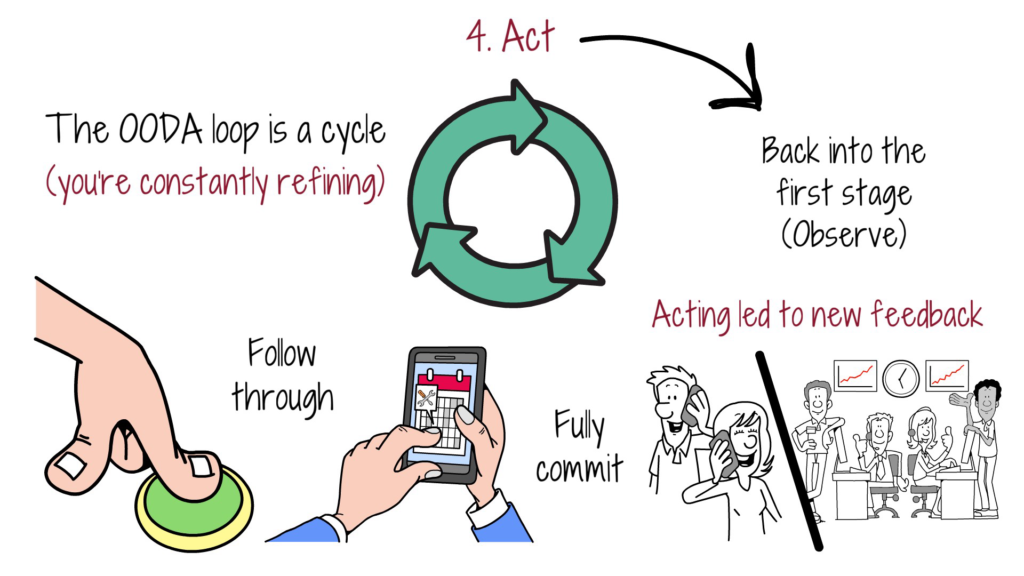
Remember, this is the OODA loop. So once you’ve implemented your decision, you can cycle back to the observe stage. It’s important to remember that with this being the last stage of the loop, your actions are likely going to affect how you’ll make decisions moving forward. So, while it can feel dejecting when a decision doesn’t go well, use the experience to learn how you can more efficiently work through the loop next time.
The more you learn, the better position you’re putting yourself in. Making consistent, top performing decisions requires you to feed the OODA loop with new information.
Summary
There’s a lot of information to take in here, but improving your decision making process and fine tuning it for top performance doesn’t need to be confusing or exhaustive. Think of it as an ongoing process – it will continue to loop round for the rest of your life.
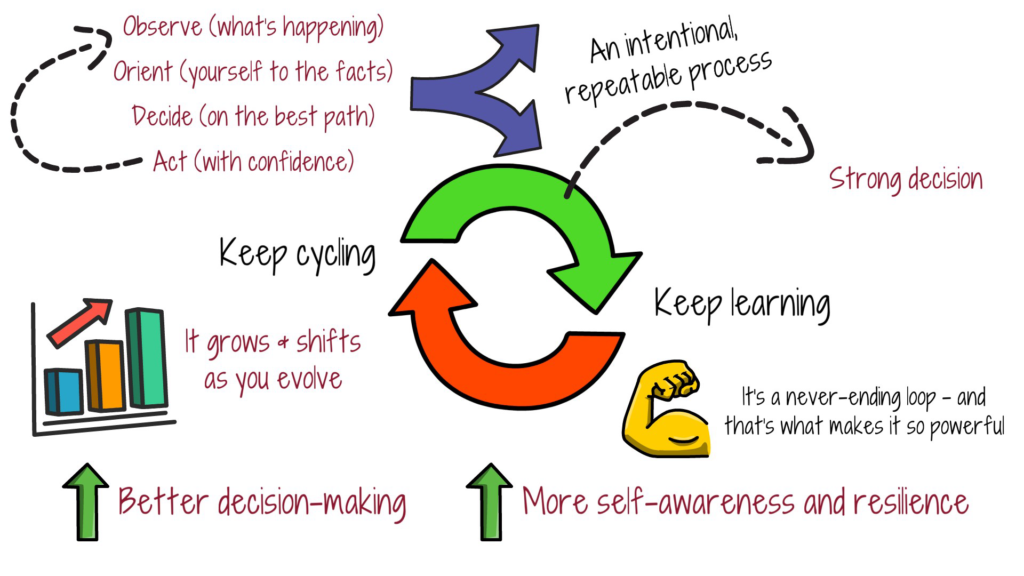
The way you observe, orient, decide and act will change as you grow older. The things you value fluctuate, so the information you choose to act on won’t stay the same. It’s why learning to be a top performing decision maker shouldn’t be a measured on any standardised scale. Essentially, the more you practice, the more you’ll be able to listen, trust, and act on that gut feeling. With that in mind, here’s a quick recap:
- Observe: gathering as much information from the outlets and resources around.
For example, observing the requirements of a new job. - Orient: positioning yourself into a position to make a decision, focusing on factors such as how you interpret something.
For example, figuring out your place within a new company – receiving and noting information only necessary to your role but keeping an open mind. - Decide: making a decision.
For example, deciding to focus on gaining support from a particular colleague/focus on a specific element of your role. - Act: following through with your decision.
Here, you take the previous step and turn it into an action.
It’s quite simple, really. Above all, ensure you forgive yourself. Not every decision is going to be the best one, even if you believe you have taken the correct and most well-informed steps. It’s a learning curve. The OODA loop requires patience and understanding.
